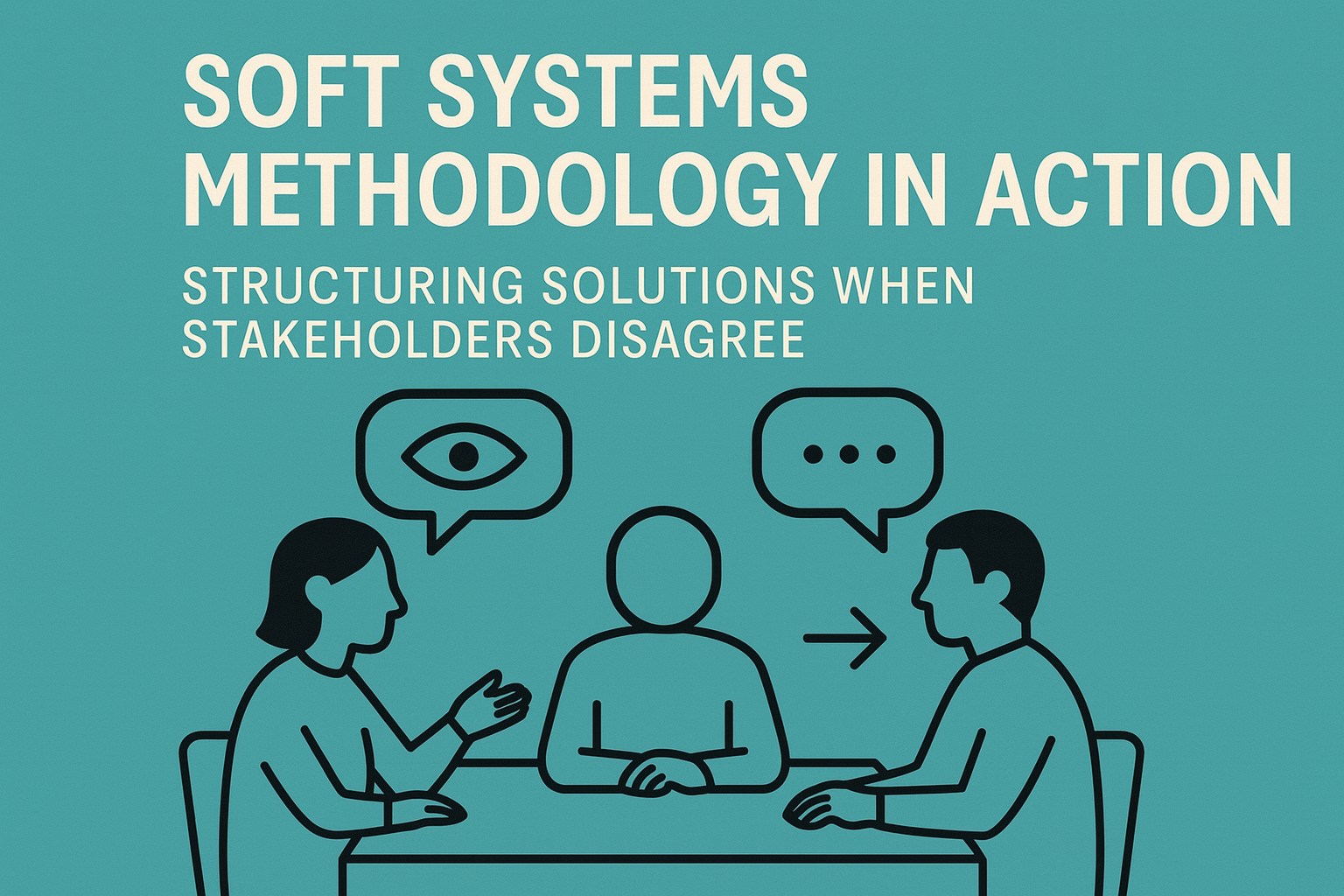Most organizations are built for control, not adaptability. They rely on hierarchies that work in stable environments but struggle when complexity rises — as it inevitably does. The Viable System Model (VSM), developed by Stafford Beer, offers a cybernetic approach to managing complexity. It helps organizations — and even societies — remain viable, meaning capable of surviving and thriving in a changing world.
VSM provides a framework for understanding how systems can govern themselves, maintain internal balance, and adapt to external changes — without collapsing under their own weight.
Understanding the Viable System Model (VSM)
At its heart, the VSM describes what any organization needs to stay alive. Beer identified five interacting subsystems, each with a distinct role:
-
System 1 — Operations:
The parts that actually do the work (e.g., departments, teams, or local communities). -
System 2 — Coordination:
Keeps the operational units from conflicting with one another, ensuring smooth internal communication and rhythm. -
System 3 — Control:
Manages day-to-day performance, allocates resources, and enforces policy coherence. -
System 4 — Intelligence:
Looks outward and forward — scanning the environment, analyzing trends, and preparing for the future. -
System 5 — Policy and Identity:
Defines purpose, values, and long-term direction. It is the “self-awareness” of the organization.
When these five systems interact harmoniously, an organization can self-regulate, learn, and evolve — the hallmarks of sustainable self-governance.
Organizational Cybernetics: The Science Behind It
VSM is grounded in organizational cybernetics, which studies how feedback, communication, and control systems operate in complex organizations. Instead of viewing management as command and control, cybernetics views it as a dynamic process of learning and adaptation.
In a cybernetic system, information flows are more important than hierarchy. Each level of the system has autonomy to act within clear boundaries, while feedback ensures that local decisions align with the overall mission. This makes organizations resilient — not rigid.
Requisite Variety: Matching Complexity with Complexity
One of Beer’s key principles is the Law of Requisite Variety, which states:
“Only variety can absorb variety.”
This means that an organization must be as complex as the environment it operates in. If external challenges multiply but internal systems stay rigid, failure becomes inevitable.
The VSM helps increase internal variety through decentralization, communication, and learning loops, allowing each subsystem to respond intelligently to local conditions.
For example:
-
A multinational company gives regional units autonomy (System 1) while still maintaining strategic coherence (System 5).
-
A city government allows community councils to make local decisions while maintaining alignment with national policies.
In both cases, variety is distributed, not suppressed.
Applying VSM for Systemic Change and Sustainability
When applied thoughtfully, the VSM supports systemic transformation — whether in an organization, a government, or a social movement.
Here’s how it contributes to sustainable self-governance:
-
Clarity of Purpose (System 5):
Establishes shared vision and values to guide all actions. -
Continuous Learning (System 4):
Monitors emerging trends — technological, social, or ecological — to keep the system adaptive. -
Operational Balance (Systems 1–3):
Ensures day-to-day stability while allowing for innovation and change. -
Feedback and Reflexivity:
Builds mechanisms for feedback, reflection, and adjustment — the essence of self-awareness. -
Empowered Local Units:
Gives operational teams real decision-making power within defined boundaries, fostering ownership and innovation.
Example: Building a Self-Governing Community
Imagine a regional cooperative managing renewable energy projects.
-
Each local hub (System 1) manages its own solar or wind installations.
-
A coordination body (System 2) balances energy flow and maintenance schedules.
-
A central governance unit (System 3) manages budgets and policies.
-
A strategy council (System 4) studies new technologies and partnerships.
-
And finally, a shared charter (System 5) ensures all decisions align with the cooperative’s mission of sustainability and fairness.
The result is a viable, self-governing, and learning system — one that adapts without losing its identity.
Conclusion: Toward Viable Futures
In a world defined by volatility and interdependence, sustainability is not just environmental — it’s organizational.
The Viable System Model provides a map for self-governance, enabling systems to maintain internal coherence while adapting to external change.
By applying VSM principles, leaders can move beyond short-term management toward true viability — a living balance between stability and transformation.



